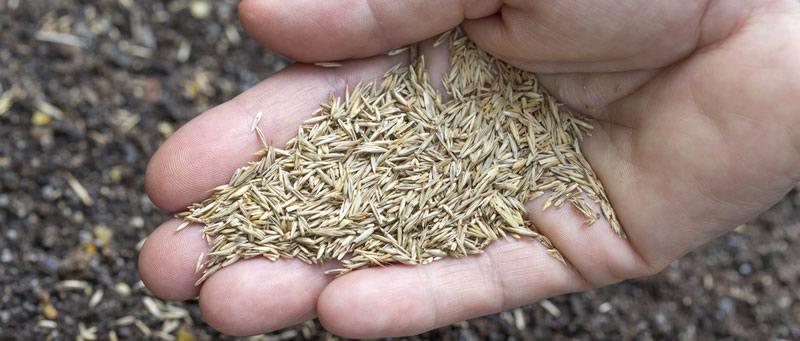Now that spring has officially sprung, with warm days and seasonal showers, your lawn is probably starting to issue forth new, green shoots, encouraging you to get outdoors and enjoy the scenery. Unfortunately, the new growth on your lawn can start to make dead patches even more apparent, prompting you to take action in order to encourage a beautiful lawn in time for summer.
There are a few different options to explore when it comes to filling in a patchy lawn, including seeding, sodding, and simply waiting. Which option is preferable? Which will best meet your needs? Here are a few things to consider.
Why is My Lawn Patchy?
Winter weather conditions can wreak havoc on your lawn, especially if you don’t maintain it in the interim. That said, inclement weather isn’t the only concern. You could see patches of dead grass taking shape amid spring greenery because of issues like pests, disease, compacted soil, or even overhead shade, for example.
Identifying the issues causing bare spots could help you to determine the best method for filling in your lawn. Working with a reliable lawn care specialist year-round can help you to avoid many issues that cause patchy lawns, but if you’re just starting out, you might need more targeted assistance.
Option 1: Seeding Your Lawn
Although this is a valid means of growing new grass, it is actually the least recommended form of dealing with bare patches on your lawn, and there are a couple of reasons why. First and foremost, seeds need time to take root, and they can be easily displaced by wind, rain, and even your lawnmower.
If you subscribe to a regular weed control program to protect your lawn, you may also have issues with seeding since weed control measures could stop your grass seeds from germinating, as well. In certain circumstances, seeding could work, but it’s not ideal if you already have a largely healthy existing lawn.
Option 2: Lay Down Sod
Sod installation is a better option than seeding, especially if you’re dealing with large bare patches. By this method, swaths of already rooted and mature grass can simply be applied to bare areas to instantly fill in your lawn. Hardy sod can be laid year-round and take within about a month, ensuring a beautiful, lush lawn in plenty of time for summer.
Option 3: Waiting – The Long Game
This is the easiest method of filling in patches, and it could be suitable if you already contract for ongoing lawn care services such as mowing, weeding, pest control, and so on. However, it may take considerably longer than sodding to fill in bare patches, so if you want fast results, sodding is the way to go.
Further Reading: Spring Lawn Care Tips, Part 1 | Spring Lawn Care Tips, Part 2 | The First Mow of the Season






